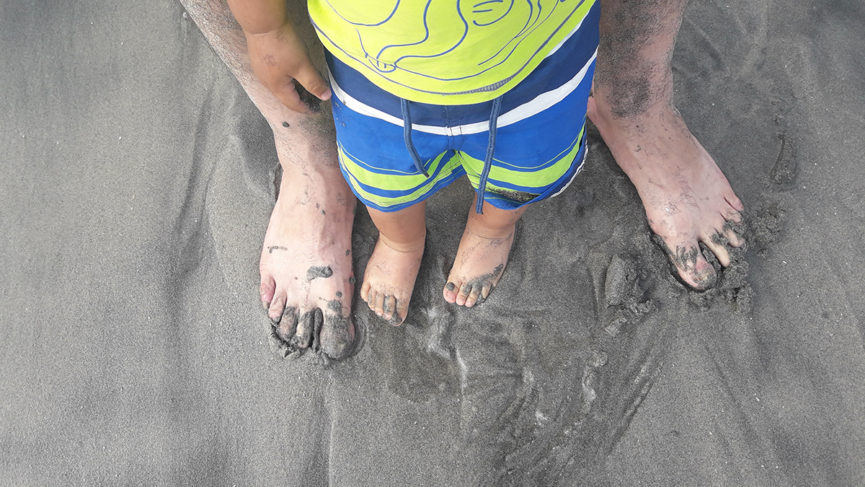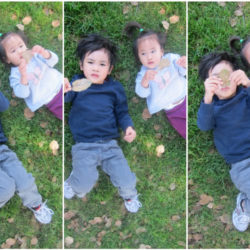Photo by Fernando Pelaez Cubas on Unsplash
Excerpted with the publisher’s permission from MOTIVATE! 8 Secrets of Successful Parenting (OMF, 2017)
Our children copy our good traits; they also copy our bad traits. We do not have to tell them to copy us. They will, whether we like it or not.
Have you heard the saying, “Your actions speak so loudly that I cannot hear what you are saying!”? Many parents tell their children, “Do what I say, not what I do!” But research has revealed that children have an inborn ability to mimic what they see, imitating not only our actions but also our behavior and attitudes.[1]
Novelist and social critic James Arthur Baldwin once wrote, “Children have never been very good at listening to their elders, but they have never failed to imitate them.”[2]
This is why research shows that parents have a greater influence on their children than society, the church, or the school.[3]
A telephone conversation with my daughter when she was a young adult studying in the US reminded me (Peter) of a day I had almost forgotten: the day I drove with my children on a trip from Las Vegas to see the Grand Canyon. I was driving a big rented Lincoln Continental limousine, and there was this “crazy” slow speed limit in the US at the time, because of the fuel crisis. I read the sign on the superhighway: “Speed Limit: 55 MPH.”
We were driving on an almost empty highway through the desert. So, I rationalized that to be a good steward of time, I should drive faster! I looked ahead, no cop. I looked behind, no cop. Stepping on the accelerator, I sped down the highway at 90-100 mph.
After a few miles, my young daughter Candy, who was seated beside me, asked, “Daddy, is there a speed limit here?” She knew the speed limit and she had been watching her Daddy, the “good steward of time,” driving over the speed limit.
I asked, “What speed limit?” But it was too late. She already caught me overspeeding. I slowed down. I repented for overspeeding and said sorry. However, I did not know then that my example, or modeling, would have a long-term impact on my daughter.
Ten years later, I received a long-distance call from Candy, by then a young adult in the US studying dentistry. Over the phone I heard her voice, “Daddy, do you know what happened to me today? After I dropped you and Mom at the airport in San Francisco, a policeman stopped me.”
“For what?” I asked.
“For overspeeding,” she replied.
“Did the policeman give you a ticket?”
“No,” my daughter said, “He looked at the record and saw it was clean, so he gave me another chance.”
“Praise God!” I said.
Just a week later, my daughter called me again. “Daddy, I was caught by a policeman again.”
I asked, “What happened?”
She replied, “I was overspeeding again.”
“Did he give you a ticket?”
“No, Daddy, the policeman looked at my record again and it was clean.”
“Baby, this is my fault,” I said. “When you were younger, you saw me overspeeding. My bad example must have been imprinted in your mind and influenced you to drive like your father. But I have already repented. Please learn your lesson. Do not overspeed anymore!”

Modeling is the most effective way of teaching.
God reveals the importance of modeling. Another term for this is “lifestyle teaching.” Note the various ways of teaching described in this Bible verse:
You shall teach them diligently to your sons and shall talk of them when you sit in your house and when you walk by the way and when you lie down and when you rise up. You shall bind them as a sign on your head and they shall be as frontals on your forehead. You shall write them on doorposts of your house and on your gates. Deuteronomy 6:5-9
Values are more caught than taught.
Children do not learn values through long lectures. We need to continually ask ourselves, “What kind of model am I to my children?”
One evening in San Francisco, I took our family to a restaurant. After we had paid the bill and we were driving away in the car, my wife looked at the bill and discovered that we had been undercharged. Now, as parents, we might think, “Great! We just saved money!”
However, without hesitation, my wife and I decided to go back and pay the correct amount. One of our children followed us into the restaurant. When we told the cashier that we had been undercharged and had come back to pay the correct amount, she was surprised!
She said, “I never had a customer return and do that before!”
That incident in the restaurant spoke so loudly that our children understood what integrity is. By that one simple act, we demonstrated to our children that in life there are other things more important than money, such as integrity and honesty. But they would not have learned it if we had kept the money. Our modeling had such an impact on the lives of our children.
If given another chance, we would do what we did then – again and again. Today, we have five wonderful children who are men and women of integrity. They are honest and do not lie. They can be trusted, especially when it comes to money.
Effective parents model loving God with all their hearts, knowing and obeying God’s Word, and then they teach these requirements diligently to their children as a way of life. We cannot teach effectively what we do not practice and we cannot give what we do not have. We must set the example first. The emphasis is on teaching our children diligently when we sit, walk, lie down, and rise up. This is intentional “lifestyle teaching,” modeled daily in everyday circumstances.
[1] Meltzoff, A. (1999). Born to Learn: What Infants Learn from Watching Us. University of Washington Seattle.
[2] Manser, M.H. (2001). The Westminster Collection of Christian Quotations. London: Westminster John Knox Press, p.33.
[3] Barna, G. (2003). Transforming Children into Spiritual Champions: Why Children Should Be Your Church’s #1 Priority.Grand Rapids, Mich.: Baker Publishing Group.

Dr. Peter Tan-Chi is the founder and senior pastor of Christ’s Commission Fellowship. He also founded The Masters Academy, the first homeschool program in the country accredited by the Department of Education. Deonna is a pioneer in the realm of homeschooling in the Philippines, and is a conference speaker, experienced counselor for women, and Bible teacher. Together, they have been happily married for over 40 years, and have five children and 18 grandchildren.
Related Posts
-
Nature Invites Children to Wonder
Who would have thought that nature would become a mom’s best friend – from being…
-
More Ideas to Keep our Children Busy This Summer
Summer vacation is here. Ask your children what are some of the things they can…
-
Bad Feelings Shouldn't Kill Us
The monsters in our head are difficult to defeat, but we don't always have to…




